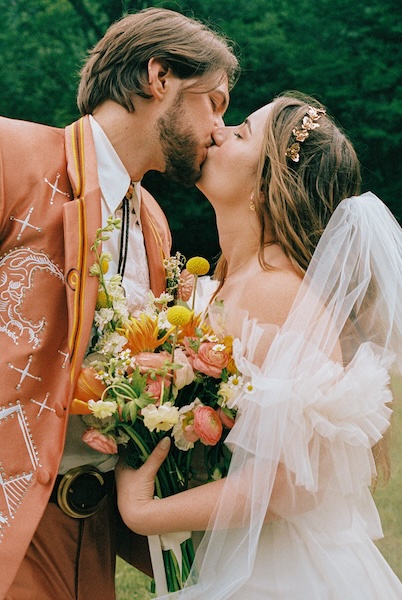Michael E. Gordon’s fine art cannot be fully appreciated on a computer monitor. It must be enjoyed, examined and scrutinized as a print.
Gordon operates in a field where few can consistently earn their entire income—nature and landscape fine art print photography. He produces stunning fine art prints for clients and collectors. He exhibits in art events (through gallery representation and select California fine art festivals), he teaches group and private workshops and lands commercial assignments from entities such as T-Mobile, The Wilderness Society, Campaign for America’s Wilderness and the National Parks Conservation Association. His work has been published in Backpacker magazine, Broughton Quarterly and View Camera magazine.
Gordon is 99 percent self-taught; his only classroom education came as a result of two fine art digital printing workshops with landscape photographer and master printer Charles Cramer.
“I’ve always been a do-it-yourself-er, and learn best on my own,” he says. “I have not assisted another photographer, nor have I held a related job in the industry. My photographic work experience has been gained while operating my business. However, I must acknowledge the scores of photographer friends, peers and mentors who have provided me with assistance, guidance and friendship along the way.”
Growing up it was Gordon’s brother who pursued photography while he plucked the guitar strings. With his band, Menagerie, Gordon performed in some of Southern California’s most notable venues. But in the early 90s, after the loss of a lead singer, Gordon left the music scene. “The lifestyle in that profession is extreme, all the unhealthy habits, very long days and late nights—many of which were spent writing and rehearsing. The requirement of complete dedication to the art and craft for success is not unlike what’s required for photography,” he says.
Taking a huge career turn, Gordon immersed himself in naturalism, hiking and climbing. His deep and abiding love for and connection with natural landscapes made landscape photography a natural progression for him. He says, “I much prefer the understated and introspective to the loud, garish and in-your-face. I prefer to pursue art where few travel, where there is quiet and intimacy.”
Steps in the Sand
Gordon refers to the Mojave Desert as his, “open space and thought workshop.” During the past eight years, October through April, he’s dedicated his efforts to creating images for his Desert portfolio. An indigenous subject that’s caught his eye on numerous occasions is the Joshua tree, a curious plant species belonging to the Yucca genus.
One November day while passing through an often-traveled stretch of Highway 14, Gordon finally made it a point to stop near a small and unusual clump of this plant. “I left the car and dashed through the desert with camera and tripod, anticipating the perfect moment for an image when the clouds would provide a fortuitous backdrop. I love the entire Mojave but this one area had been beckoning to me for a very long time. The lighting, the timing—everything finally lined up.” What resulted, he says, is, “Joshua Trees, Indian Summer Sky.”[above]
Overall he’s produced 46 final images for his Desert portfolio, but Gordon says hundreds have been produced over the years for the series. “It’s a continuing theme and one likely to never see an end,” he adds. “I didn’t consciously set out to create a body of work on the desert; the desert found me and locked me in.”
Another image in the Desert series, again with Joshua tree central, was produced in the southern Sierra Nevada Mountains. Photographing in Yosemite Valley last winter, Gordon had to alter his return plans one evening due to the season’s first big snowstorm. Instead of driving home, he remained in the area overnight waking to find, “A gloriously crisp and stunning blue sky morning with more fresh snow. I was thrilled to see such pristine conditions and surmised that the Joshua trees of Walker Pass would likely be covered. It’s rare to find these plants doused with snow.”
A Good View
To produce most all of his photographs, Gordon will head out on foot for multiple days with his dog, Mojave, just “Walking until something strikes me.” On occasion he’ll trek with a friend, but shares that his best work is produced when alone, undisturbed, and free to absorb and digest.
“Some days I may have no specific shooting goals and will photograph whatever I come across that’s interesting and compelling. Other times I work with explicit intent to build or add to a particular body of work,” he says. Regardless, Gordon slows down, stops and begins, “A meditative distillation to arrive at a final composition.” His contemplation must lead to a determination that a wonderful photograph is in view, otherwise he doesn’t prep the camera.
“I typically only shoot if I am certain,” he smiles. As a result, he very rarely exposes more than one negative. “It used to be that my photography was based more on a visualization approach, but I found that method too restrictive. You miss a lot of good stuff when you’re intent on a particular image under particular conditions.”
Commenting on exposure, Gordon notes that it typically takes longer time with view cameras. He tends to shoot at a more shallow aperture span and with ample available daylight to keep exposures not nearly as long as those who pursue the f/64 aesthetic. His films of choice: Ilford Delta 100 (black and white); Fuji Astia (chrome); Fuji Pro 160s (color negative). Very sparingly, Gordon may also use a polarizing filter or black-and-white contrast filters (yellow, orange, red, green). “Despite the convenience of digital there are no currently affordable, lightweight and convenient solutions for the large format photographer. Even with the tedium of scanning and spotting/cloning, I still love and prefer the look of silver grain,” he adds.
Heart of the Trade
Gordon muses that once upon a time the fine art print represented the very nucleus of the craft’s heart. “I cannot imagine a finer destination for the photographic image than as a beautifully rendered fine art print. A JPEG as final form destined for the Web or Flickr seems incomplete to me, and almost a betrayal of the medium. Even with so much attention being paid to digital, and so many photographers shifting to this mode, the fine art print remains paramount for me.”
To preserve that vision and emotion, Gordon maintains his own printing in-house for everything up to 24 x 30. Digital darkroom work and color management remain completely in his control, adding that there’s no way he can leave the interpretation to someone else.
When presenting the final work he spares nothing in its display, relying on fine art cotton rag paper, all archival matting/mounting materials, solid walnut frames and impeccable finishing.
For retouch, Gordon uses Photoshop and QuadTone RIP. He considers himself highly versed in Photoshop, especially manipulation via the Curves Adjustment Layer (CAL). “Nearly all my retouching is done with CALs and controlled masking. AUTO tools and Photoshop plug-ins are great for photographers trying to speed their workflow, but these shortcuts are rarely beneficial for me. I spend as much time as necessary to create beautiful fine art prints and never look to hasten the process.”
Bright Future
For this year and beyond, Gordon is zeroing in on three market channels: product sales, commission assignments and workshops. He sells little to no stock photography. “That end of the business has been turned upside down and I just can’t bring myself to participate in a system that devalues the medium and the artist,” he says.
The Julia Dean Photo Workshops has just added Gordon to their instructor roster and will offer his, “Introduction to Large Format Photography” workshop in March 2011. “Workshops are probably what I market least aggressively. It takes a lot of time and energy to put them together and it can distract from my primary goals. But there’s no denying these can provide a solid income if you’re a good teacher.”
Gordon continues to plan and market his own workshop programs in and around Southern California, and has recently been sponsored by Chamonix View cameras. “I use these large format cameras for working in the field. The bodies are durable and lightweight, composed of wood and carbon fiber composite material. I bought my first Chamonix sight unseen and have loved them since. I bought a second as backup. When I find gear that is worthy, value-priced and revolutionary, I want people to know about it!”
In summer 2011 Gordon plans to release a special eBook, tentatively titled: Fine Art Black and White Digital Printing. The collection will cover all aspects of fine art black and white printing for film and digital, including: vision, craft, tools and techniques. For more information on Gordon and his work visit www.michael-gordon.com.
Martha Blanchfield is creator of the Renegade Photo Shoots and a freelance marketing and public relations consultant.





